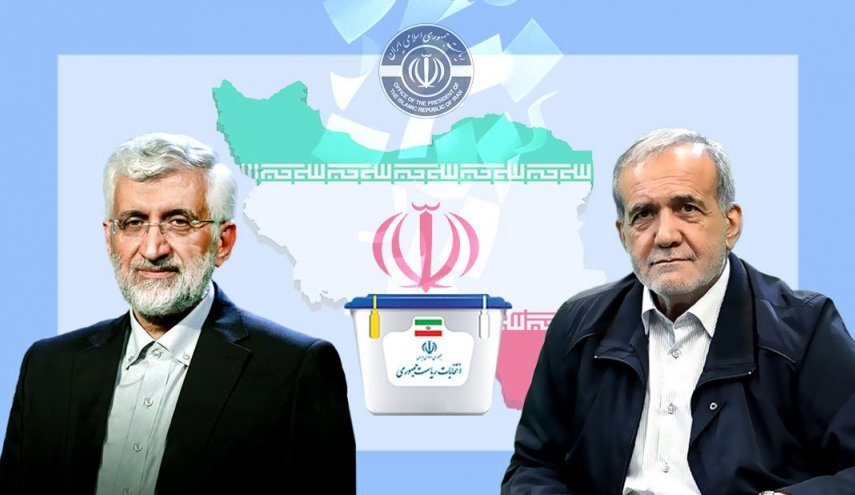Runoff presidential election reflects diversity and dynamism in Iran

MADRID - The elections in Iran will have a runoff on July 5th, after none of the candidates reached the necessary majority (50% plus one of the votes) in the elections on June 28th. This marks the second time in the history of the Islamic Republic that a runoff is required to decide the president.
In the first round of elections, Masoud Pezeshkian emerged as the winner, securing 10.4 million votes according to data provided by the Ministry of Interior, which accounts for 43.5% of the total votes. In second place, Saeed Jalili garnered 9.4 million votes, representing 37.7% of the total. Mohammed Qalibaf obtained 3.4 million votes, equivalent to 14%, placing third. Mohammed Pourmohammadi received 200,000 votes, accounting for 0.8% of the total.
The voter turnout was 40%. In the last presidential elections held in 2021 and won by the late President Raisi, the turnout reached 48.8%. The legislative elections held in March this year had a turnout of 41%.
Qalibaf's third-place finish is significant, especially because he was viewed as the favorite during parts of the campaign, leading several polls in the early weeks. In recent hours, Qalibaf has issued a statement urging his supporters to back Jalili in the runoff:
"Although I personally respect Dr. Pezeshkian, the journey is not over yet. Due to my concerns about some of the people surrounding him, I call upon all revolutionary forces and my supporters to prevent the return to power of the movement that has significantly contributed to our current economic and political problems."
Qalibaf added that he was glad to have contested the elections, although his "political sense" indicated he should remain in his position as the Speaker of Parliament. He stated that his candidacy "provided an opportunity for the revolutionary movement in the second round of the elections."
During the final days of the campaign, two marathon meetings took place, one in Mashhad and another in Tehran, involving Jalili, Qalibaf, and prominent figures such as Mohsen Rezaei, Vice President under Raisi, and Esmaeil Qa'ani, the current commander of the Quds Force of the Islamic Revolutionary Guard Corps. These meetings aimed to reach an agreement between the two candidates and prevent a potential victory for the reformist camp.
Additionally, the two candidates who had withdrawn their candidacy to support the unity of the so-called "Revolutionary Front," Alireza Zakani and Amir-Hossein Ghazizadeh Hashemi, have also expressed their support for Saeed Jalili in the runoff.
The statement from Zakani asserted that efforts will be made to ensure the victory of the candidate from the revolutionary front. Meanwhile, Ghazizadeh stated in a post on X (formerly Twitter) that it is "the duty of all who care about the country to vote for Jalili as the representative of the conservatives in the elections."
Therefore, it can be said that after the two unsuccessful meetings, a "Revolutionary Front" has been formed that will face Pezeshkian in the runoff.
The two candidates advancing to the runoff, scheduled for next Friday, the 5th of July, will soon be able to resume their campaigns.
According to Iran's electoral law, candidates can begin campaign activities for the runoff once the final results of the first round are confirmed. The Ministry of Interior has sent the results to the Guardian Council, a 12-member constitutional body expected to review and confirm them soon.
As with the first round, the campaign can continue until 24 hours before the start of the runoff voting.
From a political standpoint, the presence of Jalili and Pezeshkian in a runoff underscores the notable differences between the two candidates while reflecting the diversity of political positions within the Islamic Republic.
Their electoral platforms and political visions are radically distinct. These discrepancies are evident in issues such as foreign policy, where Jalili staunchly opposes any agreement with the United States that compromises the fundamental principles underpinning the Islamic Republic. He is known for his opposition to the 2015 nuclear deal, arguing that the guarantees provided by the West were inadequate.
In contrast, Pezeshkian has expressed during the campaign his willingness to reach agreements with the West, believing it to be the best guarantee for lifting sanctions and ensuring stability in the region.
The differences between them are also significant in economic matters. Jalili advocates for a vision of social justice rooted in Islamic concepts, with a strong state ensuring protection of the rights of the underprivileged. In contrast, Pezeshkian proposes economic opportunities through attracting foreign investment and limiting the state's role in economic planning.
But perhaps the most significant aspect from a political perspective is the existence of two options that are so distinct and far apart within the political-economic spectrum, challenging the narrative of a lack of real choices in the Islamic Republic. This diversity of options is not new. The fact that Iran has had presidents as diverse as Khatami or Raisi underscores the importance of understanding the country's political dynamics without succumbing to simplistic analyses suggesting a lack of genuine options or the notion that all candidates are alike.
It is evident that Jalili and Pezeshkian are not the same in political terms. Both represent real, distinct, and independent options that in some way reflect the diverse political visions upon which the Islamic Republic was built, without this being seen as a contradiction.
Leave a Comment